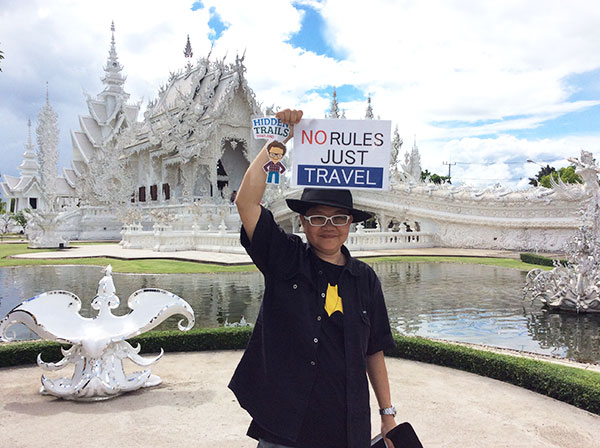
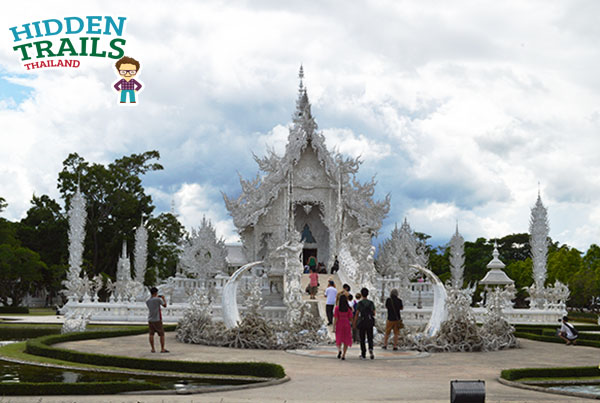
Known as the Black and the White, Wat Rong Khun (The White Temple) and Baan Daam (Black House) are both creations by two very controversial artistic sons of Chiang Rai. While one is more immersed in creative artistic sculptures and outspoken, the other prefers a minimalistic approach and is more immersed in natural finishes and off course music and poetry. Yet both have left wonderful icons of monumental creations in Chiang Rai which will stand as great legacies of their time. The one thing in common with the both of them is their fascination for the bizarre and the morbid! These two renown sons of Chiang Rai are Ajarn Chalermchai Kositpipat (Wat Rong Khun) and Khun Thawan Duchanee (Baan Daam).
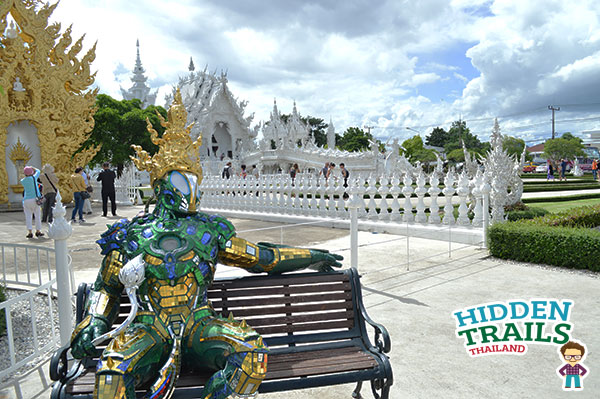
Wat Rong Khun was created in the image of purity,hence the white colour and pieces of glass were embedded into the sculptures to catch the light and make the whole monument gleam in the sunlight. It is believed that Buddha was a pure man and white was a reflection of his purity. However, if you look deeper into the designs of items and structures around the temple, you cannot help but think that there is something deeper than just heavenly gods and deities here.
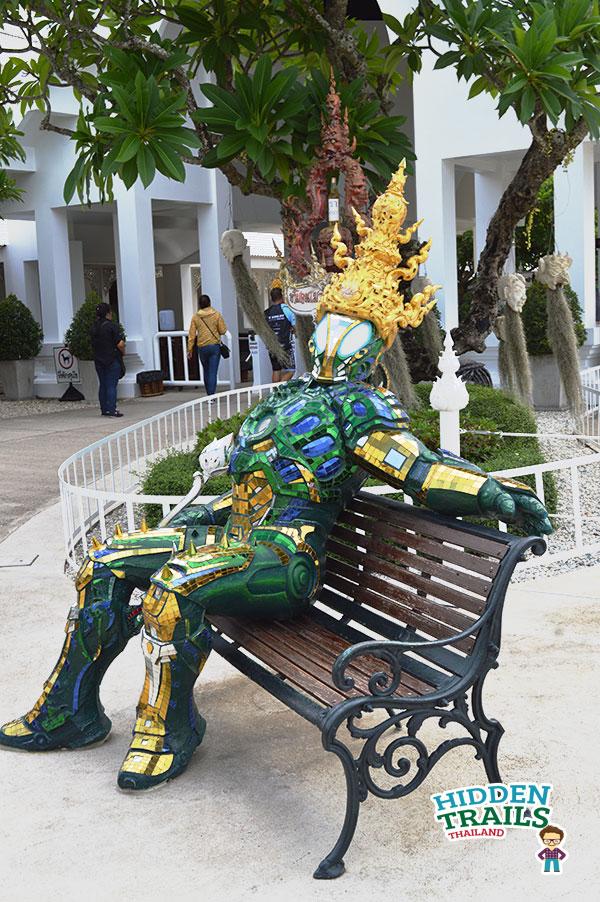
Some of the sculptures at the outside seem to be trial pieces of artistic whimsies like this one of a robotic deity, while others seemed like grotesque masks doubling as flower pots but with a sinister appeal to it. They remind me of demons that I have seen at some of those Heaven and Hell temples around Thailand.
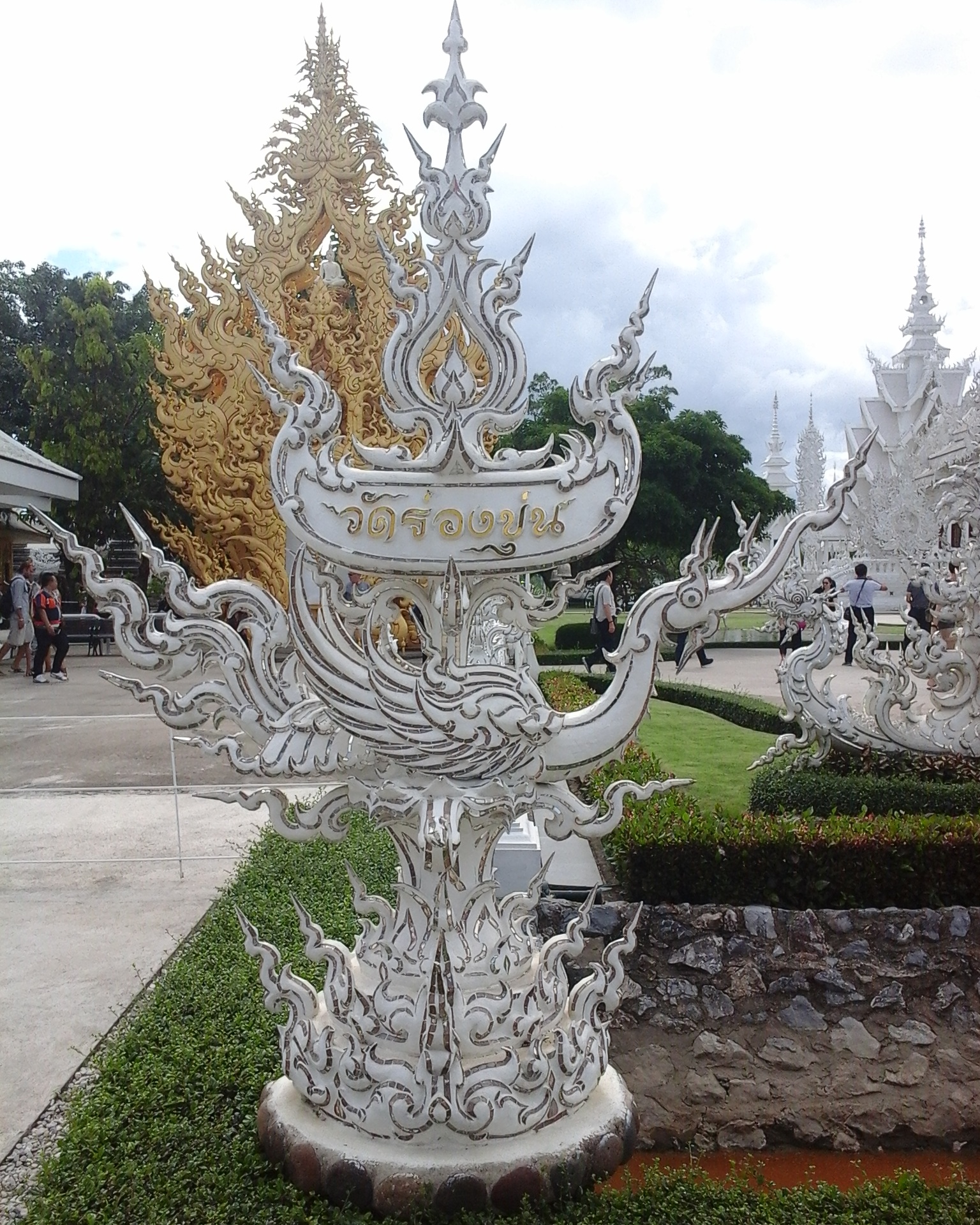
The sculptures all have pointy ends like thorns or maybe to insinuate heavenly flames. Mind you that many of these sculptures were first conceptualised on paper before being made into full-scale sculptures. Wat Rong Khun is also one of the most visited attractins in Chiang Rai.
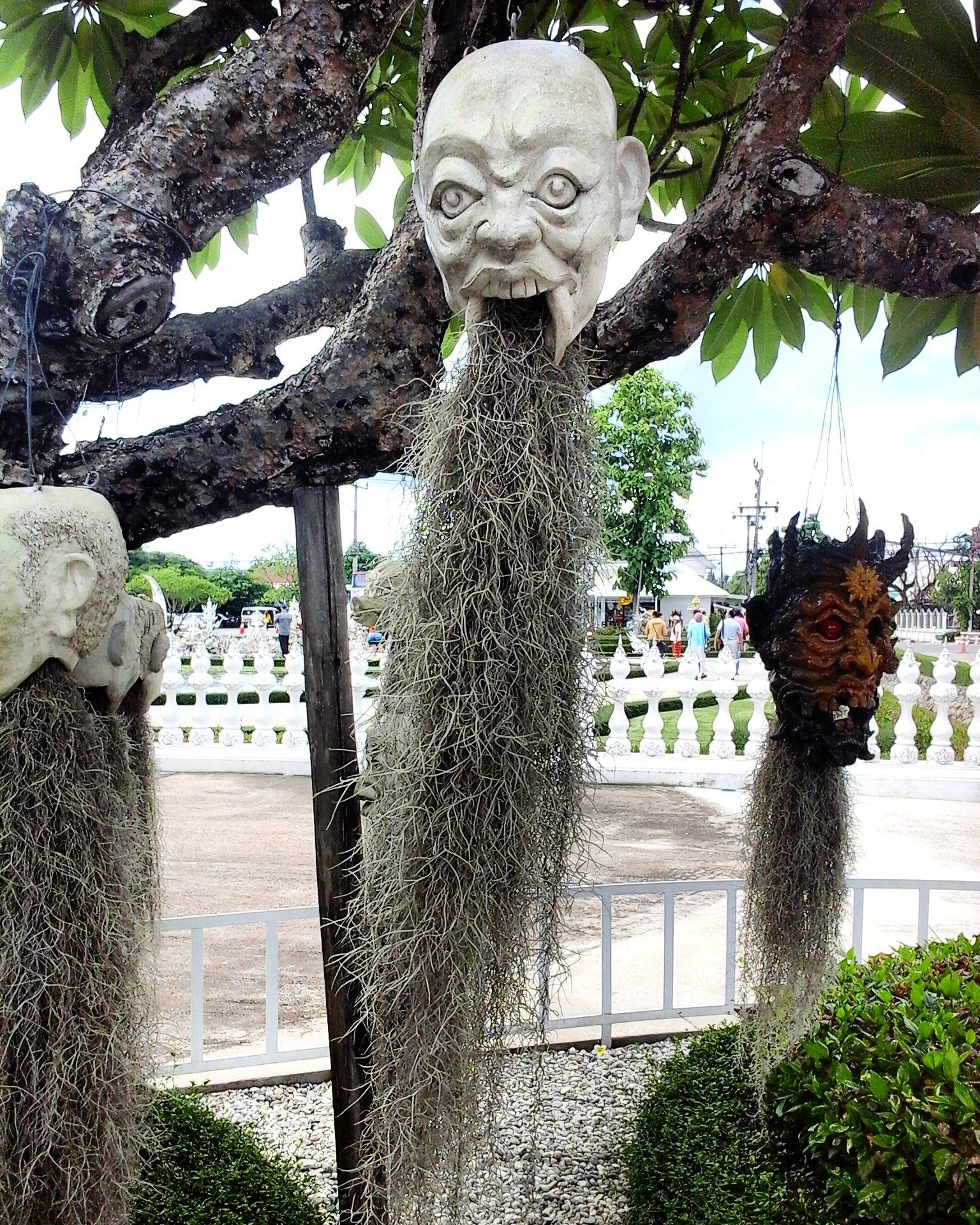
These are some of the more bizarre items on display doubling as flower pots. Grown with Spanish moss they give the impression of hair or beards and some of them look like demon masks. People have a fascination for the supernatural in Thailand, something to do with karmic retributions and Buddhists beliefs. Concepts of Heaven and Hell are part of everyday life which can be seen in reflection of the sculptures.
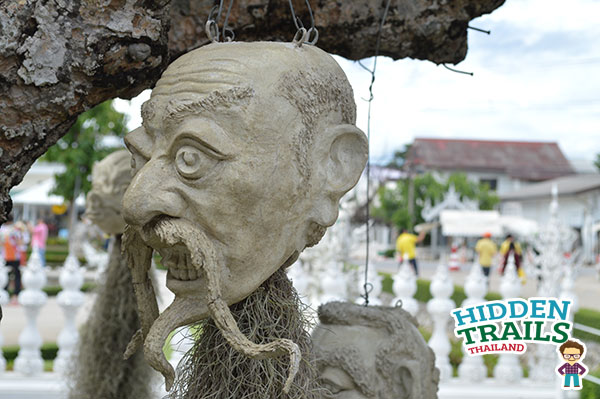
A beautiful cast iron bell that you can ring your announcement to the temple. It is supposed to bring you good luck. One thing is you are not to sit on any of the sculptures as they are rather delicate so please do respect te warning signs.
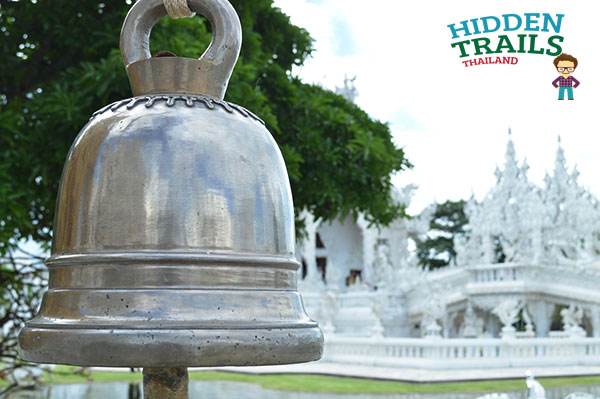
A beautiful view of this outstanding temple in all its white glory.There is a significance to the layout of the temple. Before you cross the bridge to the Ubosot, you have to pass through a pit of souls at the start of the bridge.The Ubosot (main building is where Nirvana and Enlightenment resides once we have discarded all worldly desires.
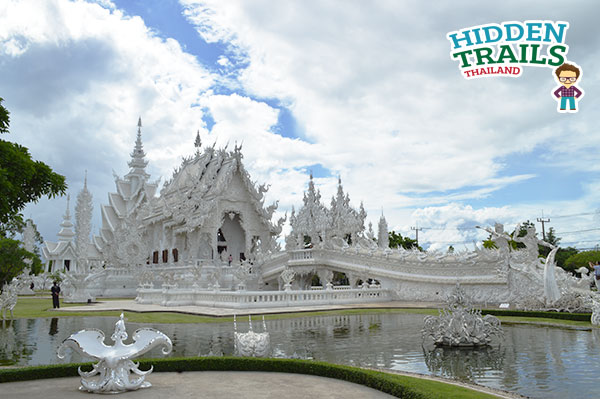
This pit of souls are humans who have been casts into Hell, going through karmic retribution and suffering while clambering for relief as this represents desire, greed, lust and all worldly sufferings. Imagine the millions of souls in there and there are even skull pots for you to put alms in. Mind you there is no entrance fee to visit this temple or as far as I noticed, so probably giving alms is a good way to clear some of your bad karma and do some merit!
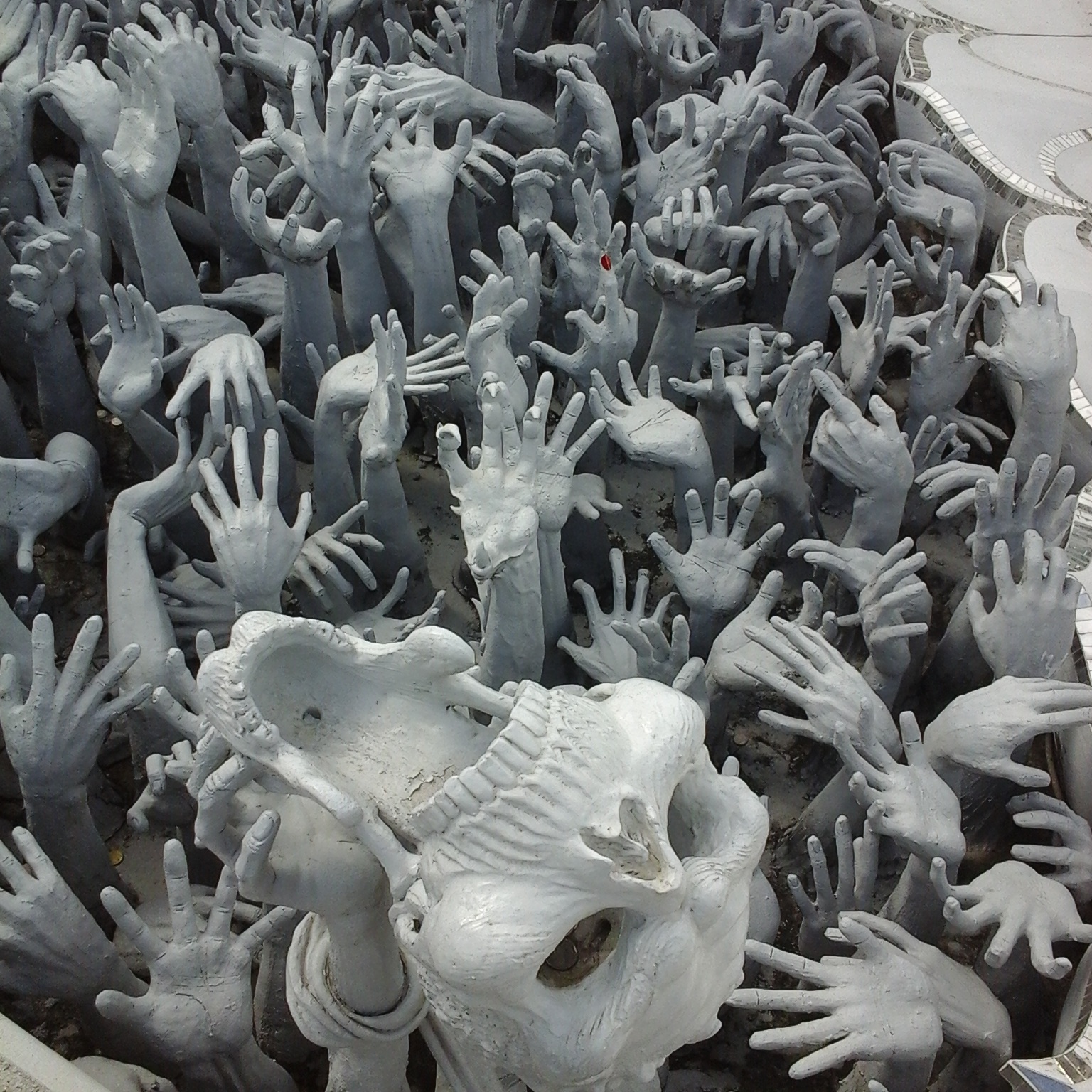
As I have said before, one needs #norules to #justtravel. There is whole new world for you to discover right here in Chiang Rai and for you to open your senses and explore as much as you can during your time here.

The effort to sculpt such a masterpiece is truly admirable. Everything is constructed in sections before finally assembled into one huge masterpiece. It must have been quite an obsession to see it finished in real form and each piece is painstakingly crafted with plaster, cement and pieces of glass. The colour, glass pieces are symbolic of Buddha, His purity and wisdom as well as the Dhamma teachings. Wat Rong Khun is not quite complete yet as there are plans for further expansions. Remember to pick up the brochure of the temple as each section has a profound meaning in the teachings of Buddhism.
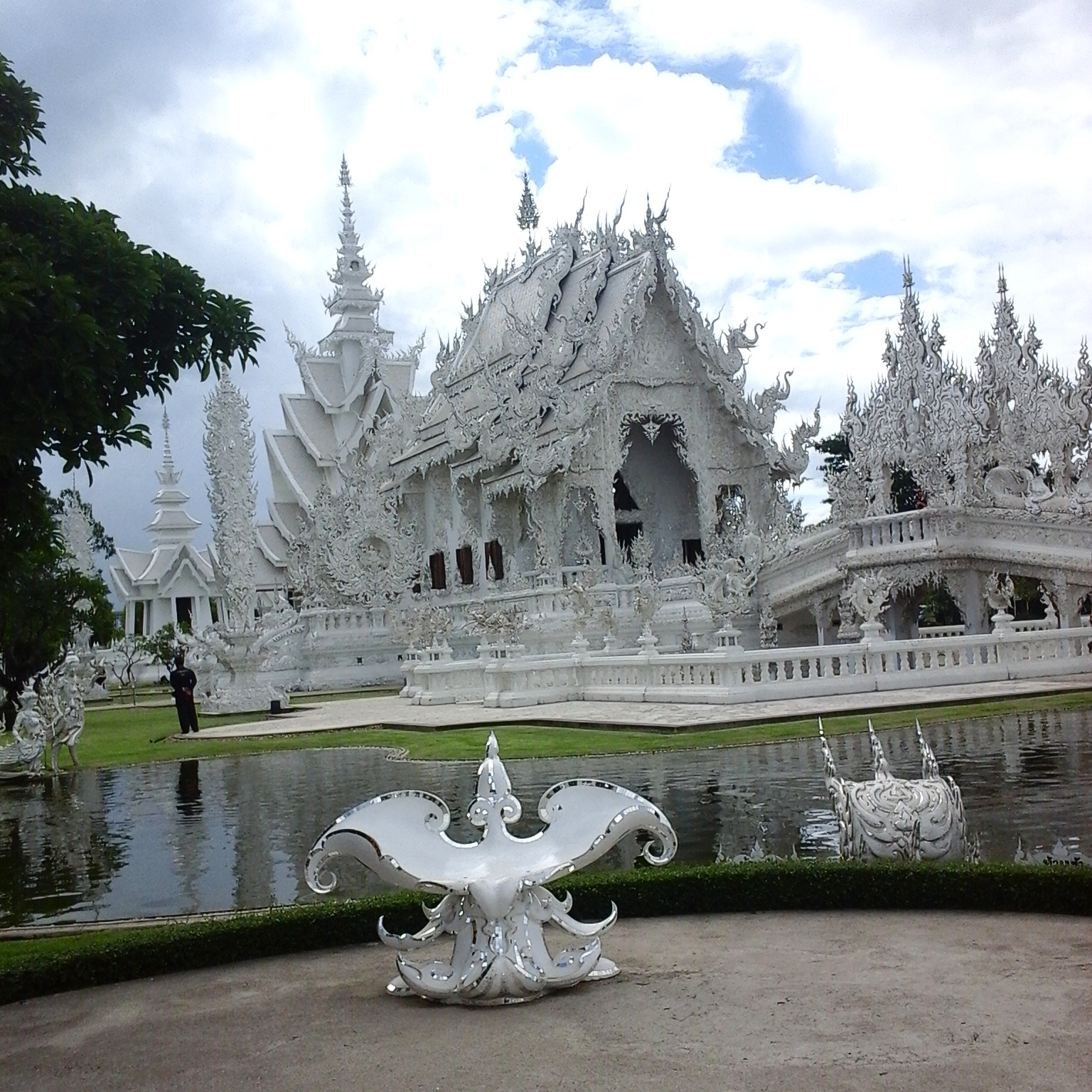
The sculptures of Gods and Deities makes them look almost heavenly. Ornate in every design and larger than life, shiny pieces of glass amulets, arm bands and weapons adorn the figures giving them a fierce almost lifelike appearance. This by the way, is the God of Death that guards the end of the Bridge to the cycle of rebirth and the entrance to the Heavenly Gates!
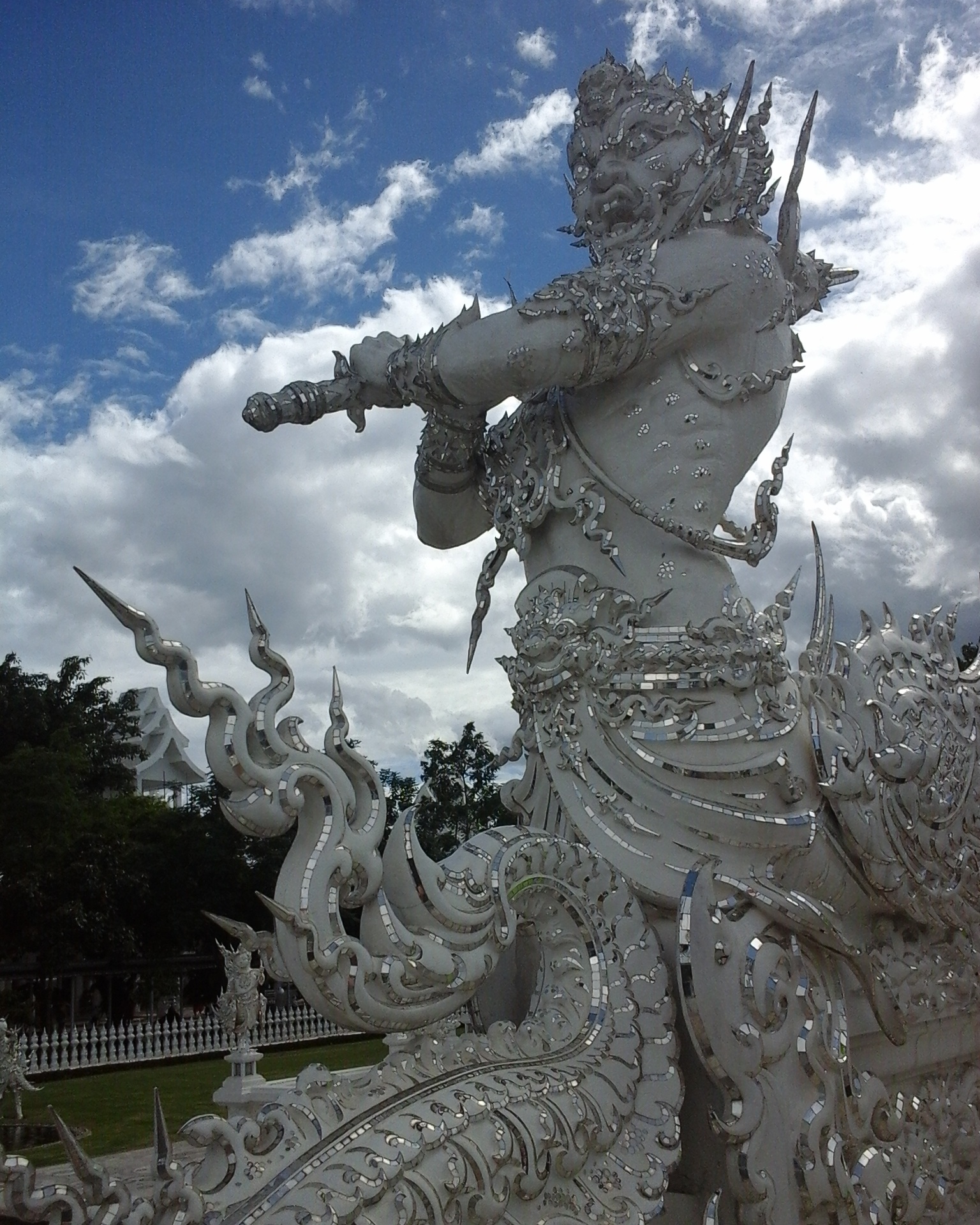
The Dragon bridge (Bridge to the cycle of rebirth) is the cross-over from mortal earth towards the Heavenly Gates which are guarded by two huge Gods namely Death and Rahu.. Beautiful dragon sculptures adorn the length of the bridge on both sides. Notice the amount of glass work that has been put into each sculpture! All the pieces of work at Wat Rong Khun needs time to admire and appreciate. You can read more about the history of Wat Rong K at the little museum outside of the temple.
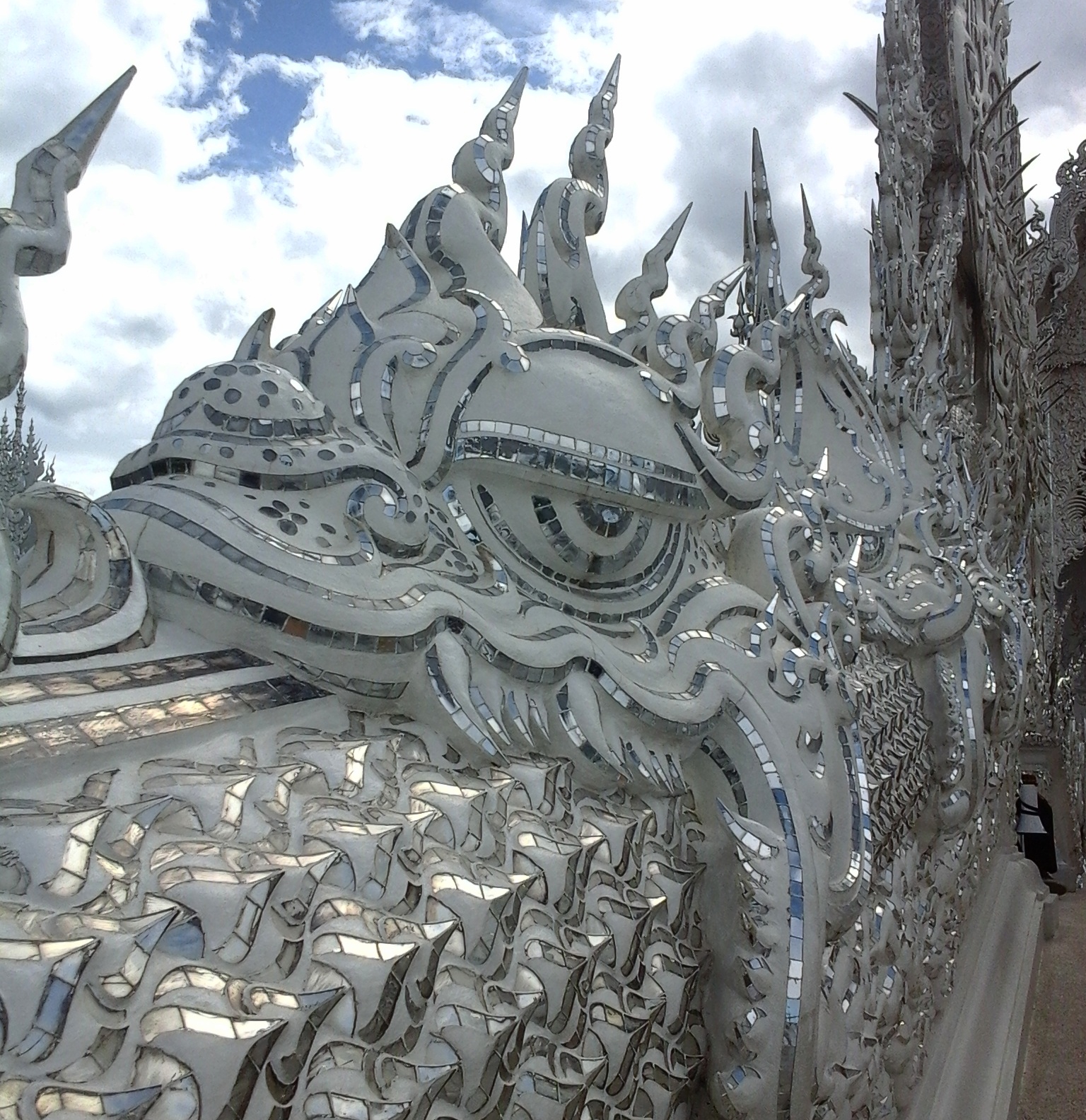
A contrasting picture of monks in their saffron robes crossing over the Dragon bridge amongst the pure white and gleam of the temple sculptures. Makes a poignant statement between life’s realities to the attainment of Enlightenment!
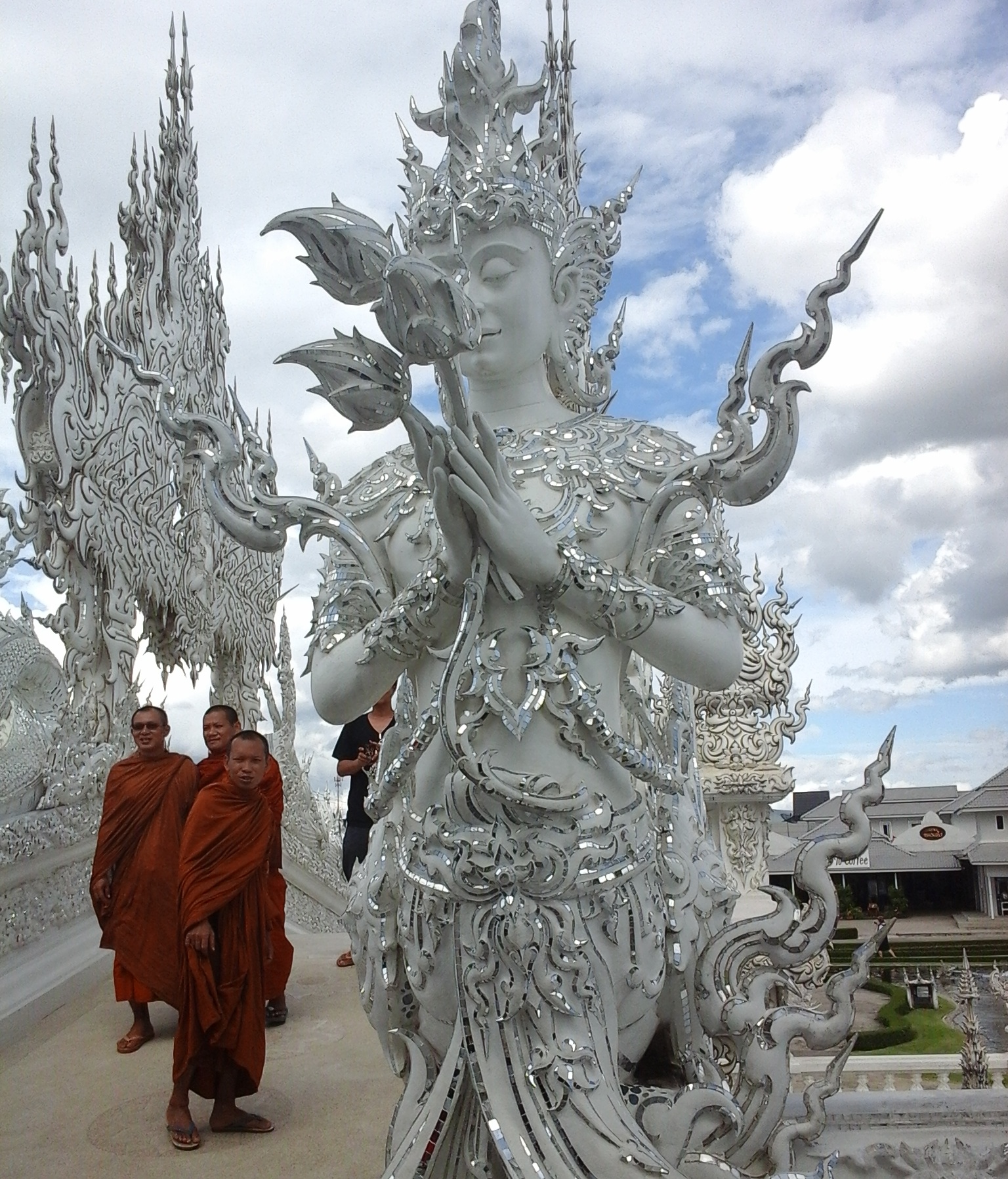
Before you exit the Ubosot, note that the murals on the wall also has drawings of modern Marvel superheroes and other worldly things, this is the artist’s way of interpreting worldly desires that we must discard as alongside these drawings are murals on the teachings of Buddha and at the end of the hall sits a statue of a meditating Buddha, to remind us to reflect not on desires but on the Dhamma teachings!
The exit gateway from the temple reminiscence of Heavenly flames and a statue of Buddha reminding us of His teachings as we go through daily life. Outside of this gate is a Pavillion where there is a small wishing well, a museum and more works of Ajarn Chalermchai Kositpipat.
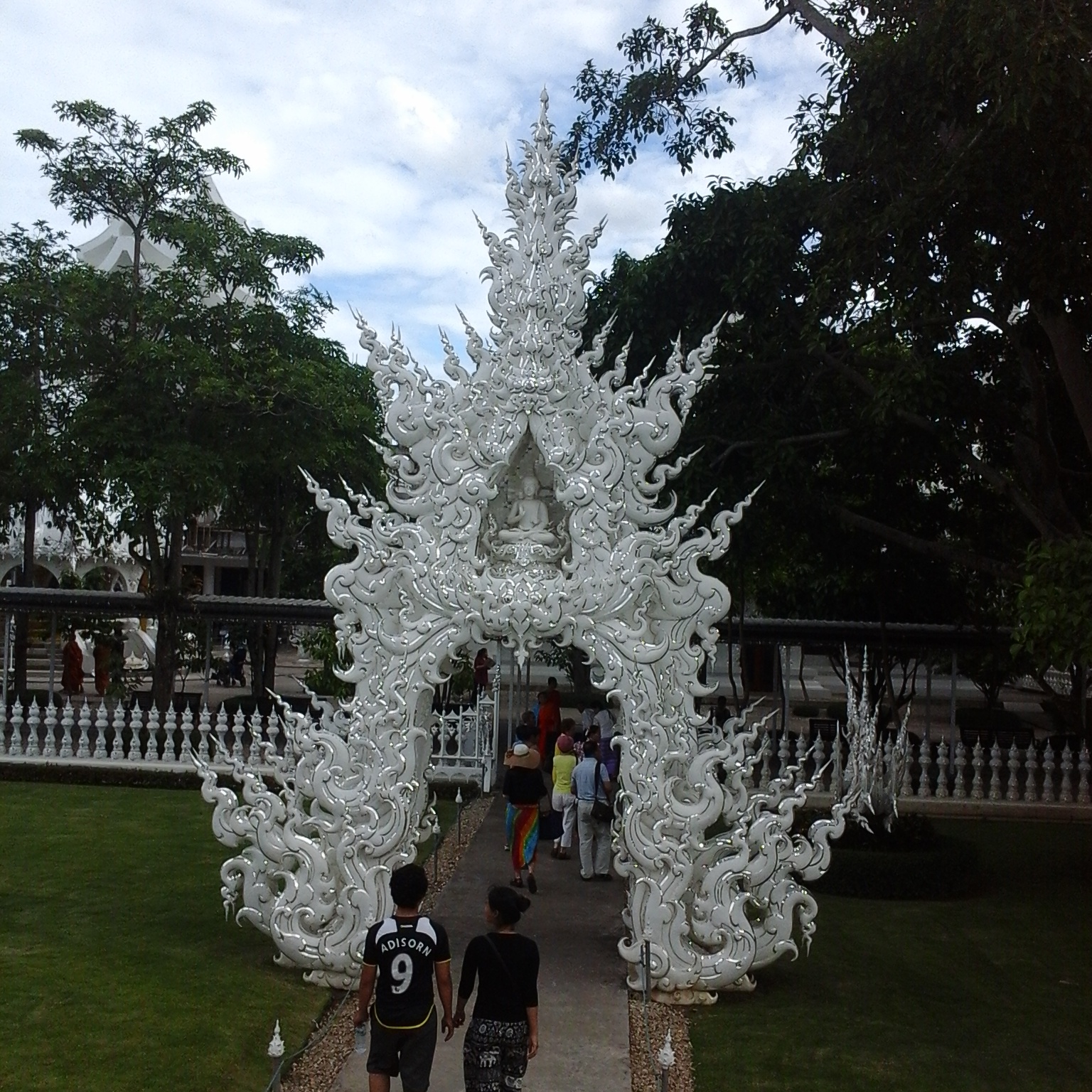
Did you know that you can also learn meditation methods here and there is also a retreat center for Buddhism in Chiang Rai for aspiring monks or those who are interested to learn more about Buddhist teachings.
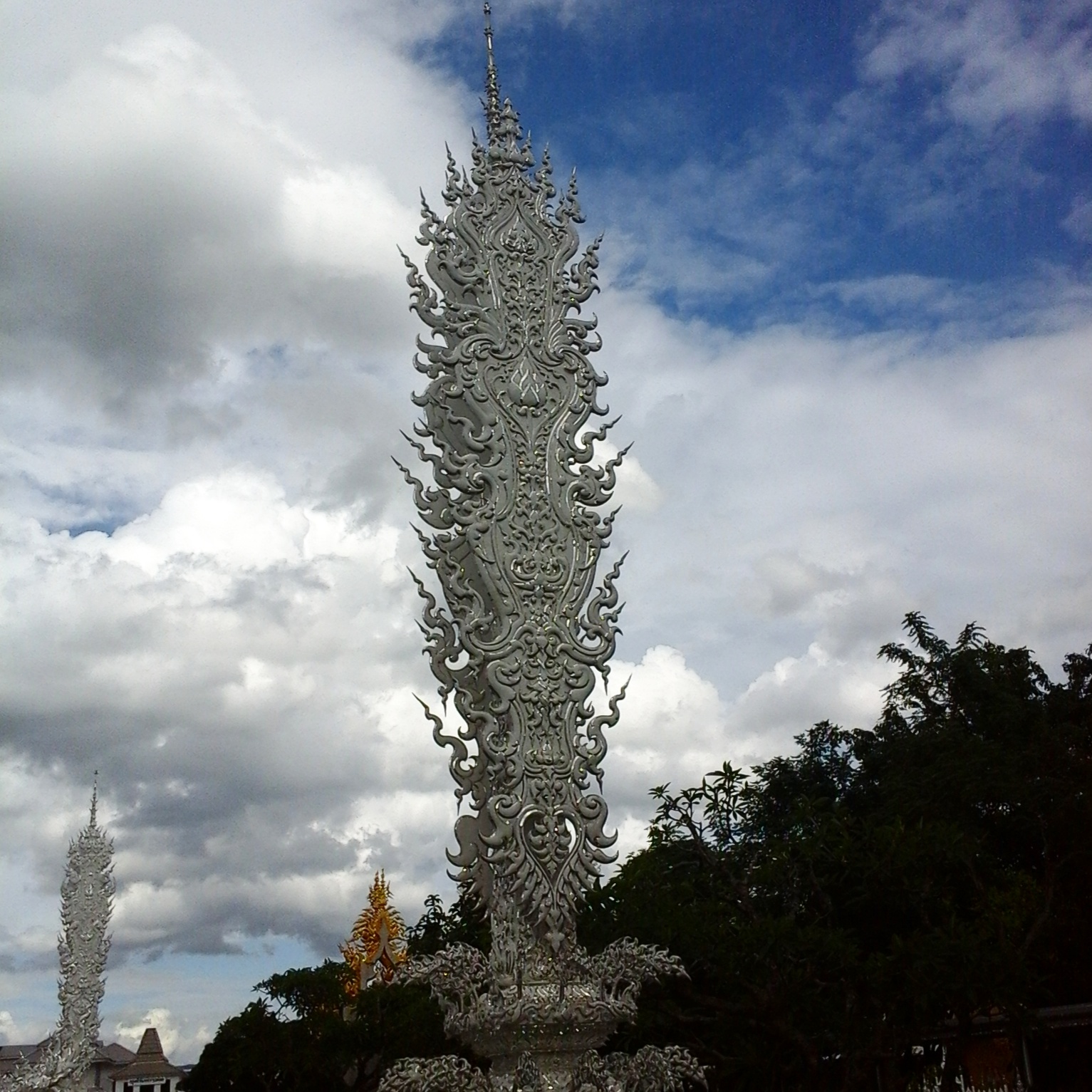
This is the Pavillion where there is a wishing well on the inside. You can throw coins into this wishing well, and if you look closely into the well you will notice a tree like structure. Most people try to aim a coin into the top most tier of this tree but as you can try, it may not be as easy as it looks!
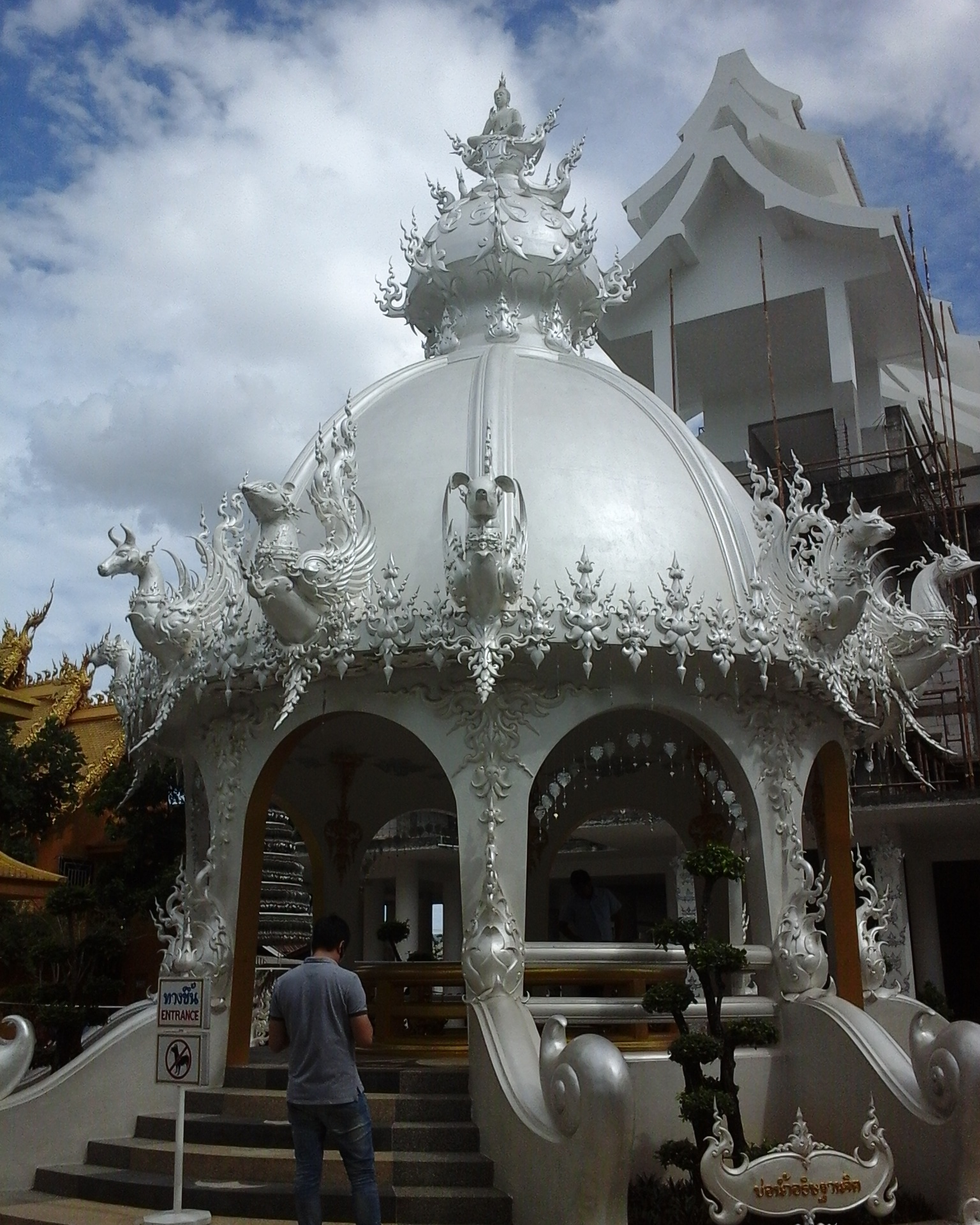
Outside in the grounds around the wishing well are several ornate trees made of metal with rows of medallions hanging from it. These are also wishing trees where you can buy a medallion from the counter near the entrance, write what you will on it and stick it to the metal tree. Each of these medallions cost around THB30. Outside the museum there are also postcards that you can stamp with a seal of the temple and send it to whomever you wish or just keep as a token of your visit.You can make a small donation into the box for the postcard.
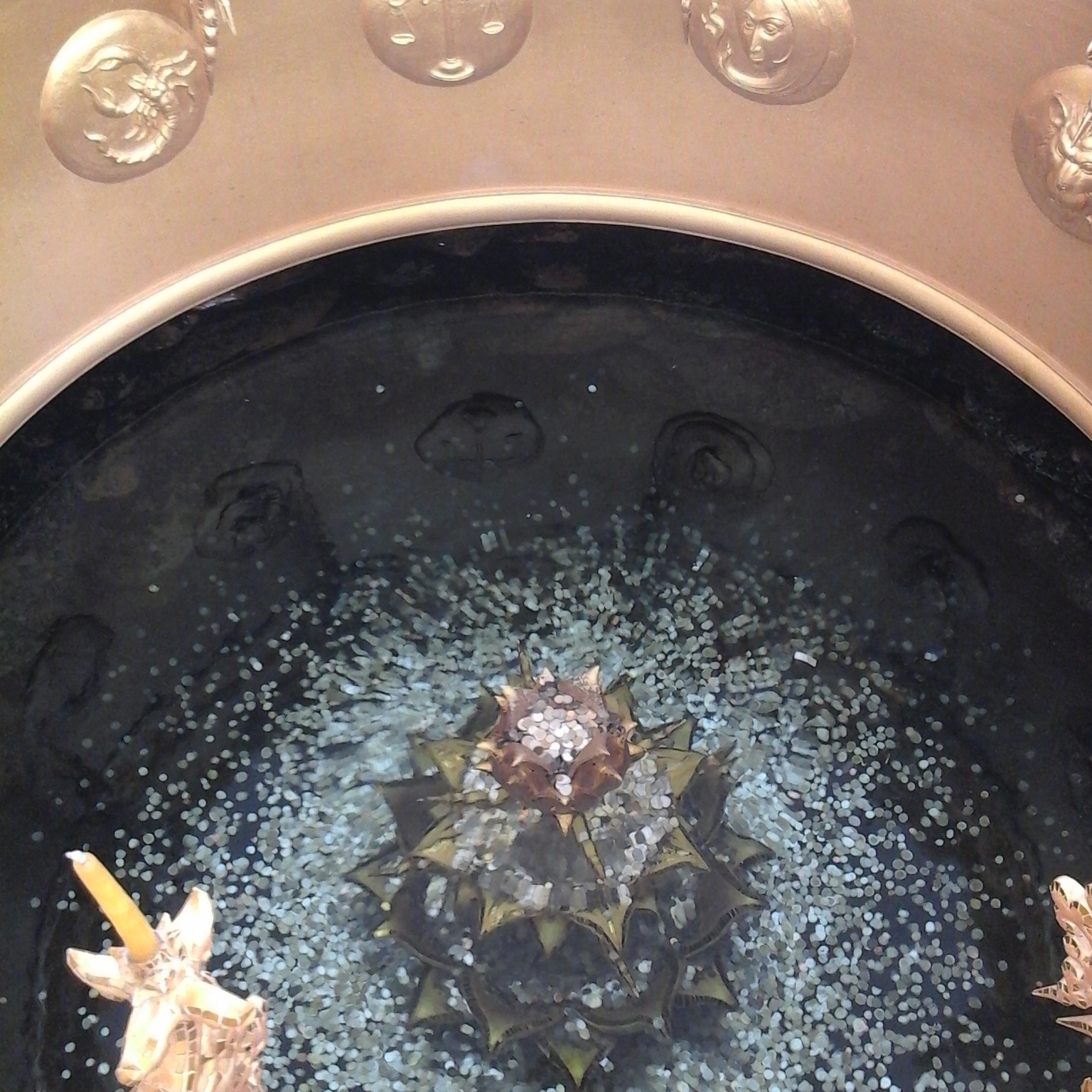
Outside near the Pavilion is a gold building which houses the washroom and museum. The gold symbolizes human desires for all things materialistic. It stands for where it is human nature to crave for money, love, lust, branded items and all those things which we cannot take with us when we die. This is made even more real with the crematorium building nearby where during cremation, we are reminded that there is nothing we can bring with us except the merit we have made and the karma that has to be paid or repaid!
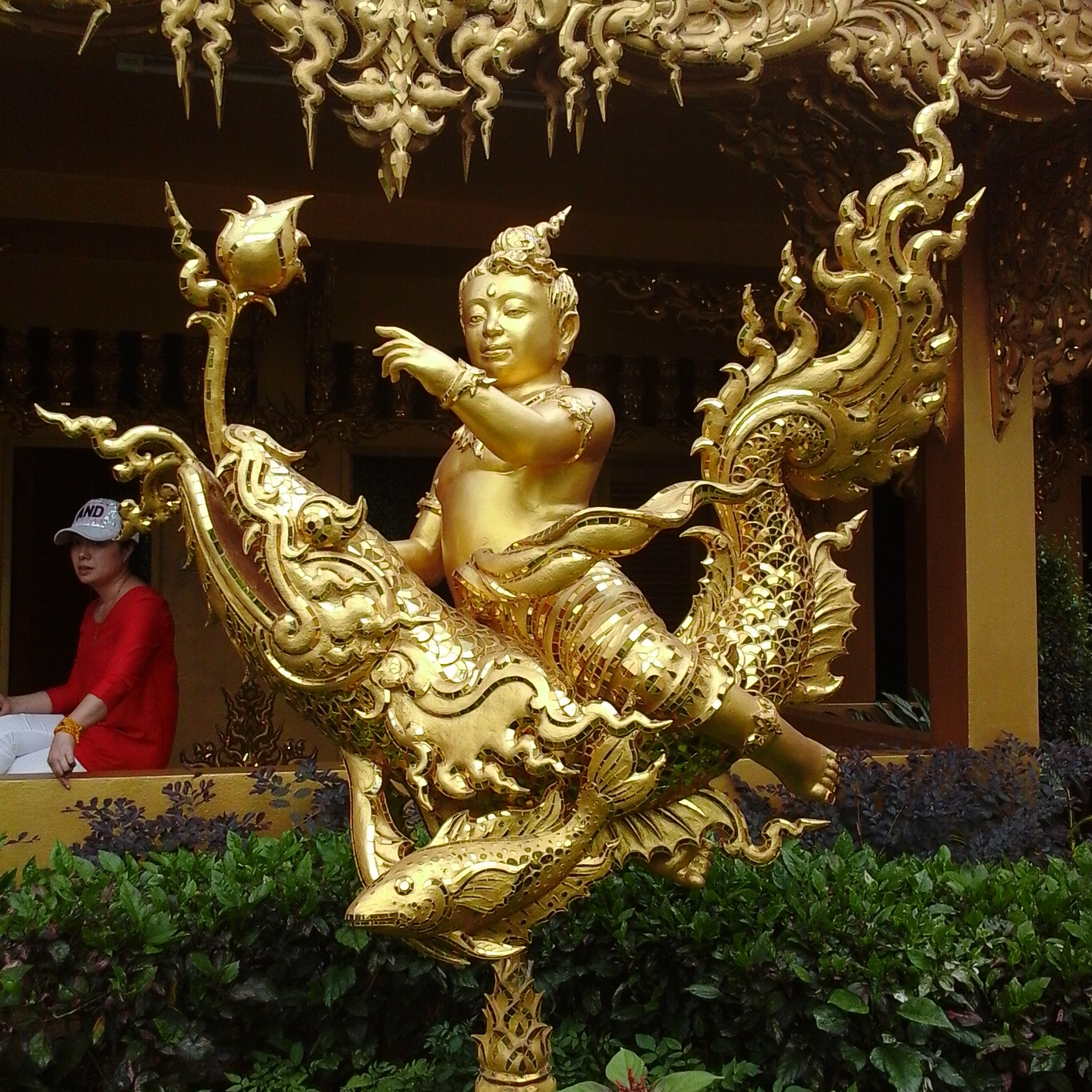
[googlemaps https://www.google.com/maps/embed?pb=!1m18!1m12!1m3!1d3753.3685406103523!2d99.7609236149128!3d19.824353286662923!2m3!1f0!2f0!3f0!3m2!1i1024!2i768!4f13.1!3m3!1m2!1s0x30d7b7dfce59940f%3A0x2afcd50d8eacb7a3!2z4Lin4Lix4LiU4Lij4LmI4Lit4LiH4LiC4Li44LmI4LiZ!5e0!3m2!1sth!2sth!4v1467823454717&w=600&h=450]

4 thoughts on “The weird and the wonderful of Wat Rong Khun Chiang Rai”
Comments are closed.